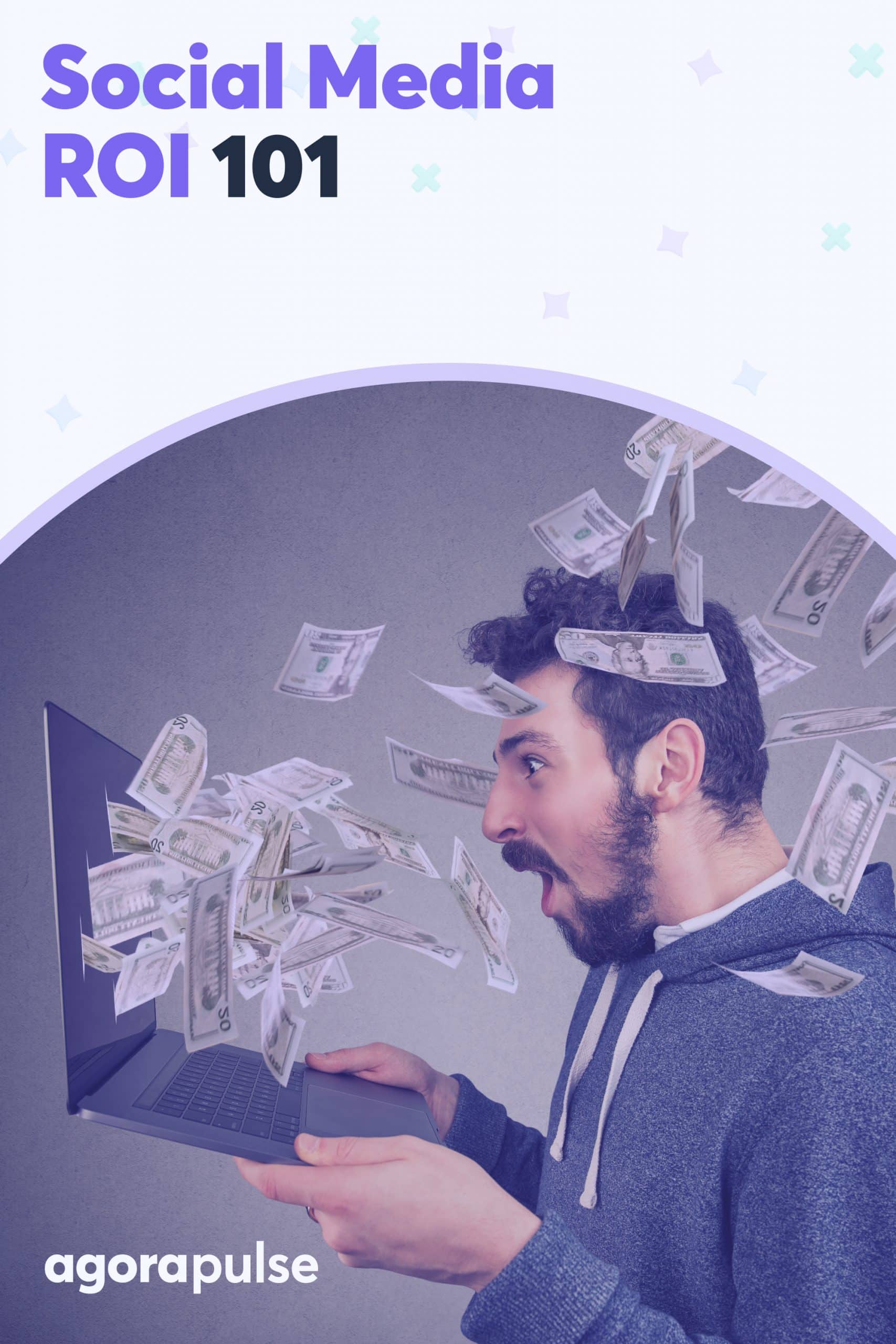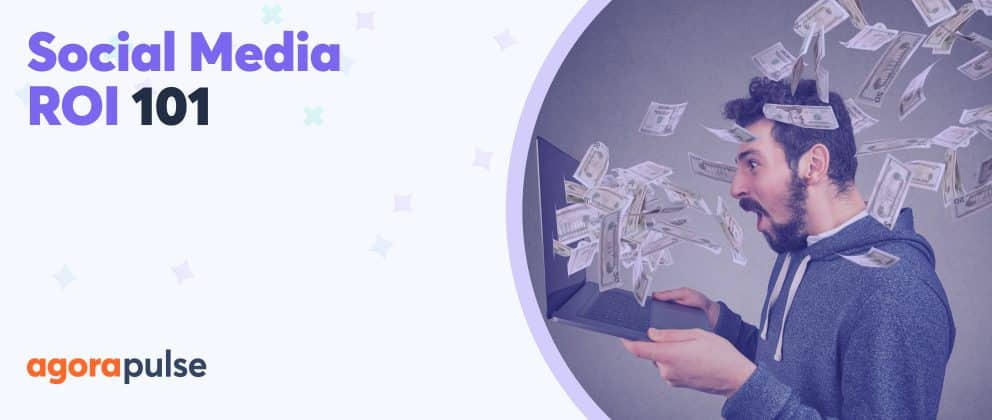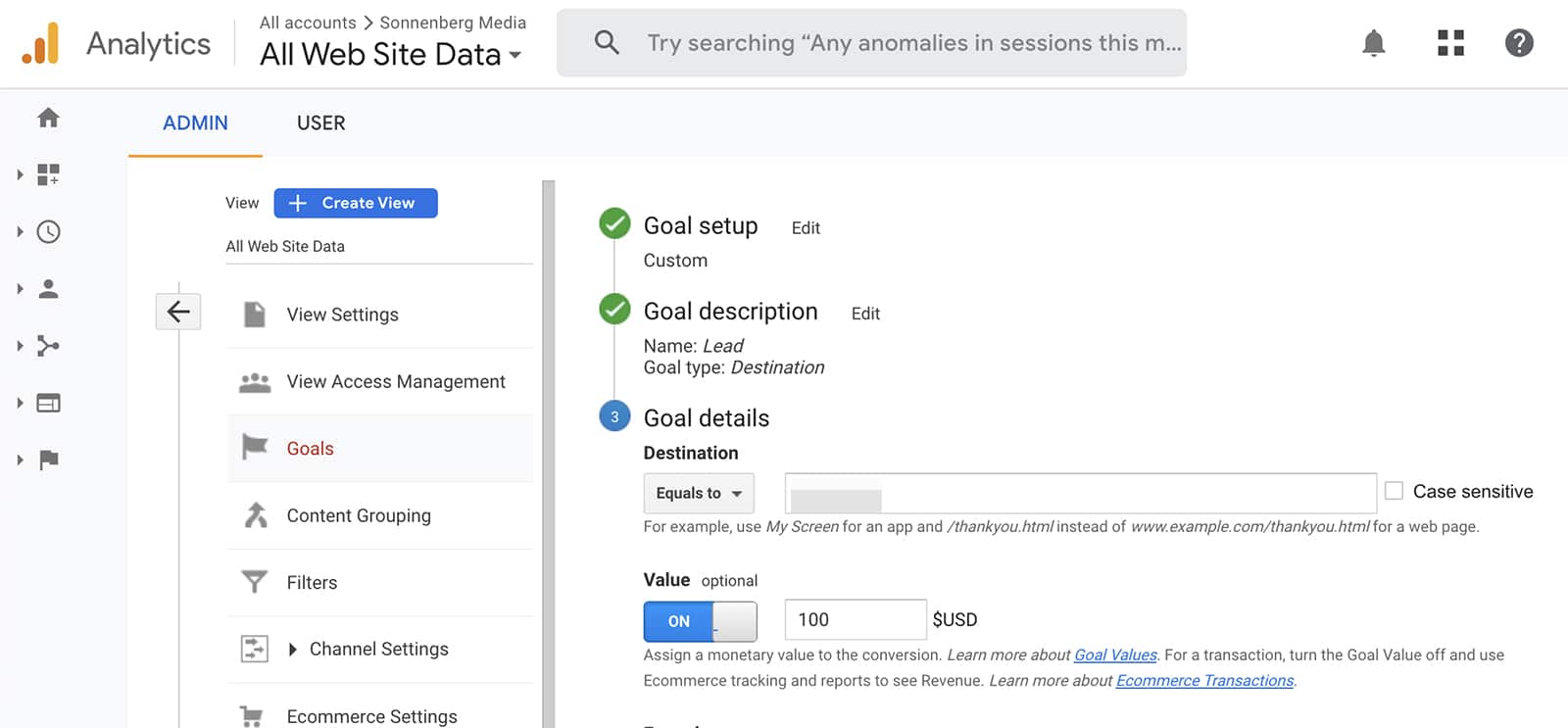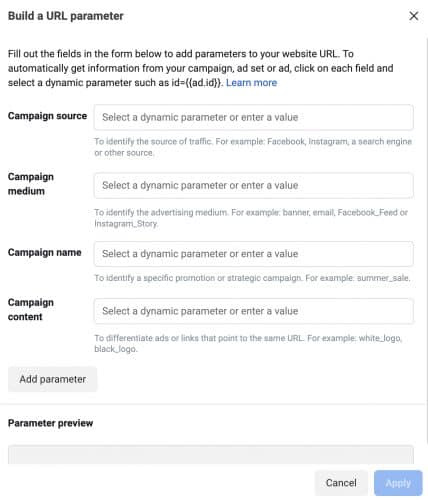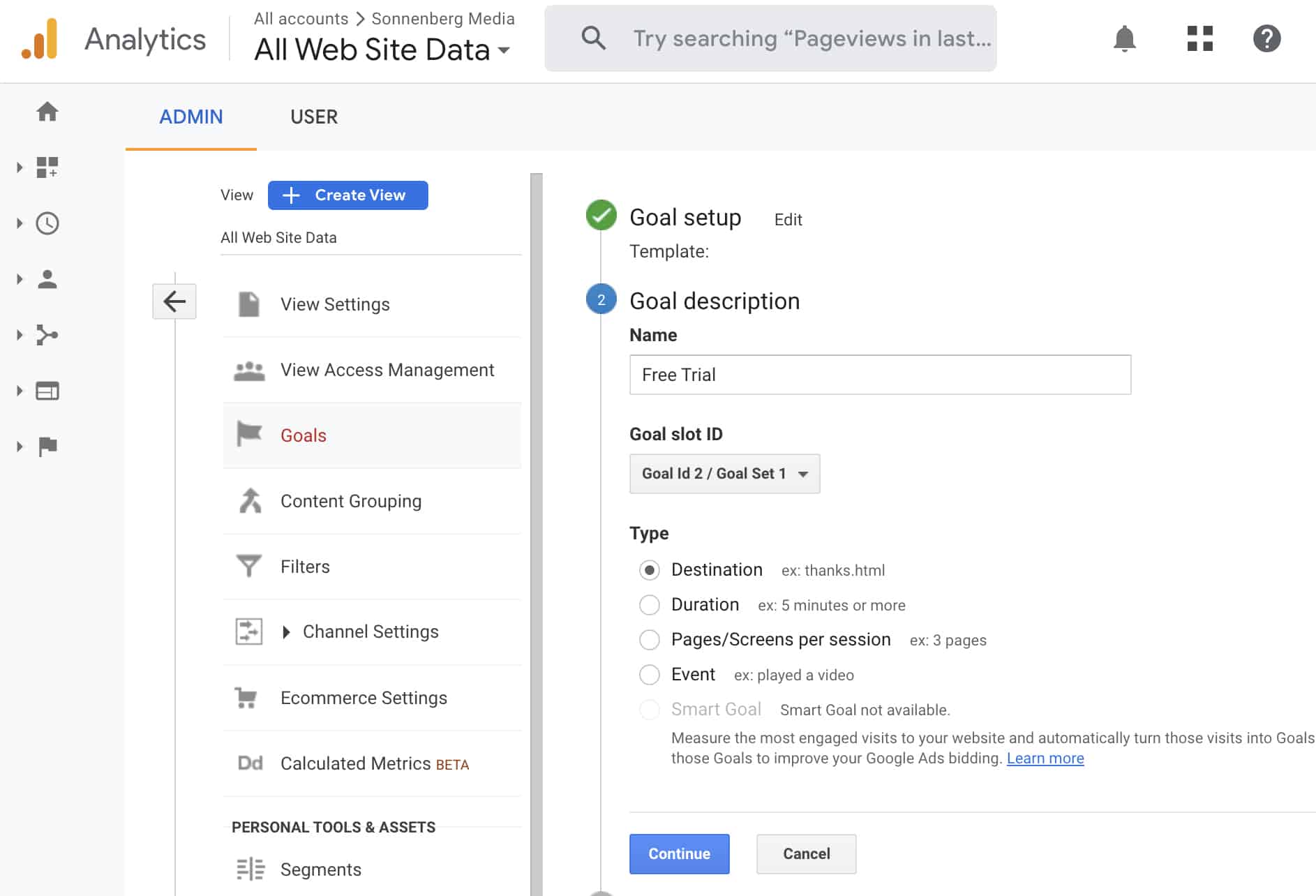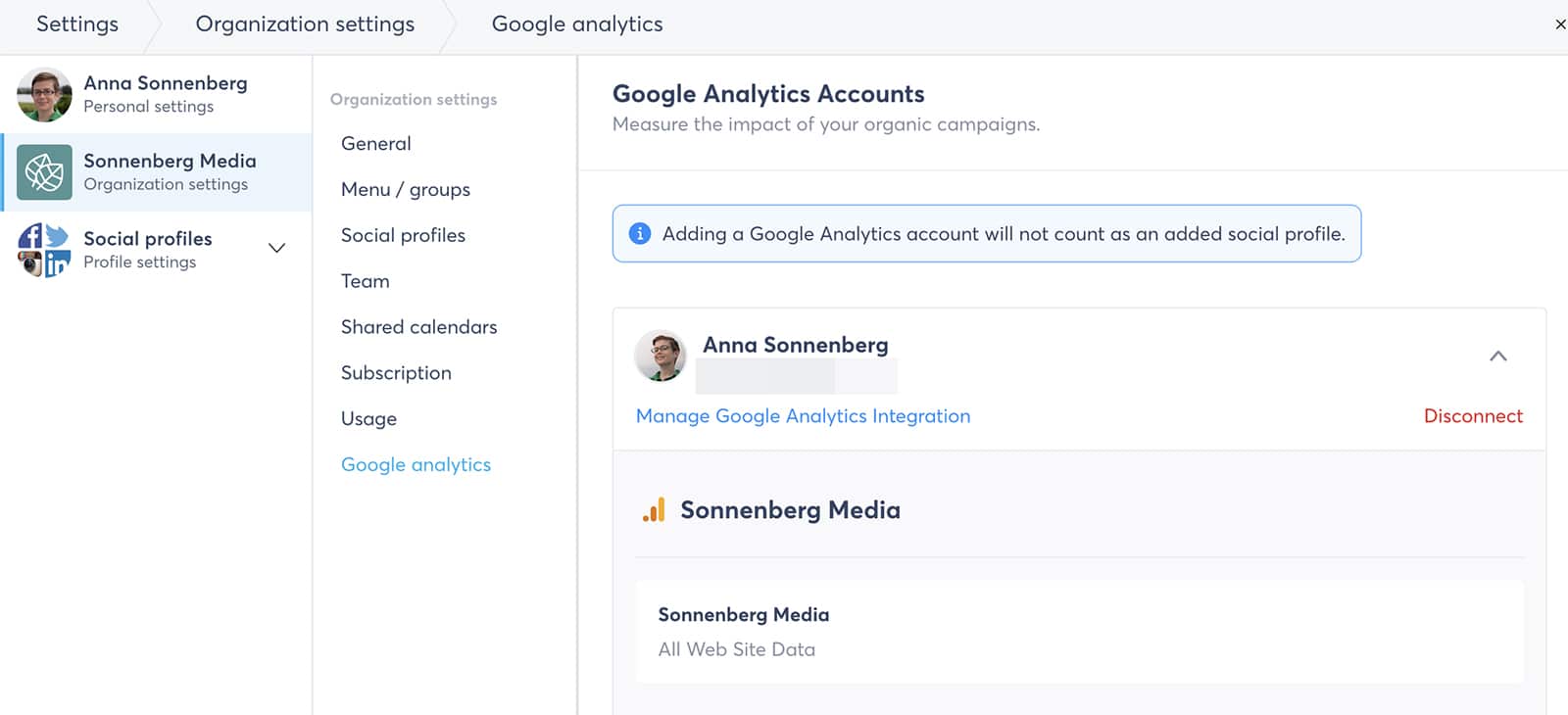How much value do your organic social media campaigns generate? Knowing how to prove social media ROI is essential, especially if you’re working toward a bigger budget or a better role.
Don’t have an exact number or have no idea where to begin tracking this metric? You might be surprised to discover how easy it can be to measure ROI. You can start measuring right now with a free trial of Agorapulse.
In this guide to social media ROI, you’ll learn everything from when and why you should track this metric to the tools you need to measure and report efficiently.
What Is Social Media ROI?
Social media ROI (return on investment) reflects the value of the activities you carry out on social media—after accounting for the cost of the resources you invested in these efforts.
You can measure ROI in many different increments, including for a campaign, for a single post, or for all the actions your team took during a certain time frame.
No matter the parameters, measuring social media ROI is a straightforward way to quantify the return your business or client gets from your social media marketing activities.
Why Does Social ROI Matter for Social Media Marketing?
As a marketer, you probably measure social media metrics like followers, impressions, comments, shares, and clicks. On the one hand, these metrics are great for understanding how well your brand engages potential customers.
But on the other hand, they’re not as helpful for understanding the true impact of your work. What is a social media post with 10,000 impressions and a 10% engagement rate actually worth to your team—and what can you do with that data?
Communicate business impact
Measuring social media ROI can help you answer these questions for your colleagues and clients. When you can quantify the value of a social media post, comment, or message, you can communicate the business impact of your efforts and prove the value of your work.
With an ROI report, you can tell stakeholders exactly how much your social media activities contributed to website visitors, leads, and sales. With the right tools, you can provide campaign, channel, or post-level metrics.
Allocate resources effectively
Once you know what kind of social media activities generate the most significant impact on your business, you can plan campaigns more effectively.
In other words, you can allocate resources for the activities that generate the most value.
For example, you might find that Instagram DMs are far superior for generating leads or that sharing case studies on LinkedIn is your best bet for getting new signups. With this knowledge, you put resources into what works—to keep creating value.
Make data-driven decisions
Social media marketing can involve a lot of guesswork—unless you use data to guide your decisions. When you track ROI, you can identify everything from the channels to the team members who contribute the most value.
Using this data, you can make smarter decisions more likely to pay off for your company. For example, you might be able to make a strong case for a bigger social media budget, a bonus for your team, or more say in your organization’s marketing campaigns.
How to Calculate ROI for Social Media
To calculate social media ROI, you need a few data points:
- Profit: How much value (i.e., money) your social media activities generated
- Investment: How much you spent on these social media activities, including the cost of materials, tools, ad spend, and contractors
Once you’ve identified these metrics, you can calculate ROI using this formula:
Social Media ROI = Profit / Investment x 100%
For example, say you invested $10,000 in a social media campaign that generated $50,000 in new sales. Using the formula above, your ROI would be 400%.
Wondering what a good social ROI looks like? As with so many aspects of marketing, it depends. Factors like your industry, the social channels you use, the funnel stage you’re targeting, and whether you’re running paid or organic campaigns all affect social media ROI.
Above all, it’s important to establish a benchmark for your company or clients. From there, you can continue to measure results and take data-driven steps to improve social media ROI over time.
When Should You Measure ROI From Social Media?
It’s in your organization’s best interest to track ROI for all social media activities, from organic posts and ads to comments and DMs. That way you can answer almost any question your stakeholders have about the value of campaigns, channels, or engagement.
So when should you provide ROI reports for stakeholders?
Start by sharing ROI insights along with your standard social media reports. For example, if you generally provide weekly or monthly reports for paid and organic social media, that’s an ideal cadence for your ROI reporting.
When your team wants to see the bigger picture, you can add quarterly or annual ROI reports to the mix. You can also drill down and share ROI insights for specific campaigns, channels, or team members.
What Tools Do You Need to Track Social Media ROI?
You can start tracking ROI analytics with a single tool. If you want to streamline your reporting or if you need to measure ROI for paid social campaigns, you’ll need a few more.
The tools below offer a great starting point.
Google Analytics
Whether you focus on paid or organic social media campaigns, you need Google Analytics to track the results of your work. When you install Google Analytics on your website, it tracks everything from visitor numbers to acquisition channels—including social media.
To monitor metrics like leads and sales from social media, configure Google Analytics to track your marketing goals. Make sure to enable ecommerce tracking or set up ecommerce events if your website has an ecommerce store.
If your website uses Google Analytics Universal, set up goals that align with key stages of your marketing funnel. If your website has Google Analytics 4, use the events setup to track custom conversions.
Agorapulse
Google Analytics is packed with data and reports that reflect results from a wide range of sources. If you want to focus exclusively on social media ROI, you could end up spending a lot of time digging through these reports.
If you connect your Google Analytics account to your Agorapulse dashboard, you can track social media ROI much faster.
Agorapulse’s ROI dashboard shows traffic and results from social media only, filtering out other sources so you can zero in on the data you need.
With Agorapulse, you can automatically track website visitors, transactions, and revenue from social media sources. The dashboard offers breakdowns by channel, campaign, content, and other metrics so you can attribute results accurately.
Bitly
Agorapulse has a built-in link shortener that helps you attribute results to specific actions on social media. So technically, you don’t need an additional tool to create and organize links for tracking purposes.
But if your organization already uses Bitly as a link shortener, you can integrate it with Agorapulse’s link tracking feature. That way your team can keep using the same system to organize links while automatically pulling the data into Agorapulse’s ROI dashboard.
Curious how this integration and workflow might look for your team?
Below, we’ll walk through all the essential steps for creating and tracking campaign URLs.
Advertising pixels
If you need to measure results from paid social ads, install relevant advertising pixels on your organization’s website. For example, install the Twitter Pixel for Twitter ads. Then use each social network’s advertising platform to track clicks, conversions, and results.
It’s also helpful to apply your campaign tracking strategy to any paid social campaigns you run. Use the advertising platform’s native URL parameter builder to add relevant campaign and placement data so you can attribute results accurately.
Once you enable URL tracking for paid social campaigns, you can use Google Analytics to dive deeper into the results. In addition to clicks, you can review user behavior, track social media ROI through your sales funnel, and monitor mini conversions.
How to Measure Social Media ROI
From setting goals to reporting on results, let’s look how to track and measure social media ROI.
In this workflow breakdown, we’ll use two tools: Google Analytics and Agorapulse.
1. Calculate marketing investment
Begin by calculating how much your organization has invested in social media marketing during the time frame you’ve opted to measure. Depending on your social media activities, your investment might include:
- Subscriptions for social media marketing and content creation tools
- Outsourced content creation and/or customer service packages
- Team members’ salaries
- Ad spend for paid social campaigns
2. Set marketing goals
Next, decide on the objectives you want to reach via social media marketing. Be as precise as possible and set SMART goals to keep your team on track.
It’s helpful to know what stage of the funnel you need to target. But when setting goals, go beyond basics objectives like improving brand awareness or increasing eCommerce sales. For example, say you want to get 100 people to sign up for a free trial of your subscription-based product in the next 30 days.
You can easily track signups by counting the number of people who have landed on the free trial confirmation page on your website. To measure these conversions, set up a goal (Google Analytics Universal) or event (Google Analytics 4).
It’s also helpful to set up goals or events for related actions closer to the top of the funnel. Using the example above, it might be helpful to create goals or events to track when your target audience visits a certain webpage or downloads a related lead magnet.
3. Connect Google Analytics to Agorapulse
Once you’ve configured goals or events in Google Analytics, link your account to Agorapulse. To connect your account, open your Agorapulse dashboard and navigate to the ROI panel. If you haven’t connected an account yet, you’ll see a prompt to do so.
If you’ve already connected a Google Analytics account but need to add another, click the gear icon in the upper right corner. Then select the option to Manage Google Analytics Integration and choose the accounts you want to connect.
4. Add campaign tracking to URLs
Now you’re ready to start tracking the results of your work. The Agorapulse ROI dashboard automatically displays results from all major social media networks, even if you don’t add campaign tracking (i.e., UTM parameters).
But when you want deeper insights into your social media ROI, campaign tracking is essential.
With Agorapulse, you can add tracked URLs to posts, comments, and messages.
Here’s how:
Open the publishing composer and create a new post. When you enter a URL, you’ll see an Untracked label appear in the caption box. Click it to apply tracking from a campaign you’ve already set up or click the plus sign to set up new campaign tracking.
Next, enter the campaign name and adjust the Source and Medium options as necessary. By default, Agorapulse displays the social network as the source and Social as the medium.
Then choose whether you want to display the full URL—UTM parameters and all—in the social post or shorten it for a cleaner look. Agorapulse uses Pulsely to shorten links, but you can opt to use Bitly instead.
After you click Apply, you’ll see a Tracked label in the caption box. When you publish the post, Agorapulse will automatically track the results.
You can follow the same steps to add campaign tracking to comments and messages in your Agorapulse inbox. Open any comment or DM and choose a saved reply or write a response.
When you add a link, you’ll see the Untracked label. Click it to add campaign tracking. You can create new tracking from this screen, or you can add tracking you’ve already set up. Press Send to start tracking.
Note that you can share any of these tracked URLs outside of Agorapulse, too. For example, you can share them with brand partners to track influencer ROI.
5. Report on social media ROI
To review the results, head over to your ROI dashboard. Set the appropriate time frame and use the dropdown menu to toggle between the goals (including ecommerce) you’ve set up. The ROI dashboard charts visitors, transactions, and revenue for each goal.
This dashboard also breaks down your results by landing page and source (i.e., social channel). If you added campaign tracking to your posts, comments, or DMs, you can also see a campaign-based breakdown of your results.
To see more detailed breakdowns, select the Your social ROI tab, which displays results from content you tracked in Agorapulse. In addition to visitors, goal completions, and goal value, you can see which social profiles and content contributed the most value.
If you’ve added campaign tracking to a variety of content, you can also see whether posts, comments, or DMs generated the best results. This dashboard also reveals the team members who contributed the most value—which can be ideal for proving your own ROI.
To share these charts, click the Export button at the top of the screen. When you present these reports to your team, use the social media ROI formula to account for your initial investment. Then you can accurately report on your return on investment.
Social Media ROI Case Studies to Inspire Your Team
Whether you represent a small business, a national or global enterprise, or a marketing agency, ROI analytics can make a huge impact on your bottom line.
The ROI case studies below show how organizations like yours have used this data to their advantage.
- With help from Agorapulse and a painstakingly organized UTM spreadsheet, a 3-D printing company reduced its social media reporting time by almost 100%. Instead of spending multiple days on ROI measurement and attribution, the company spends less than 30 minutes each month, saving over $2,500 every month.
- Digital Butter, a marketing agency, adopted Agorapulse for social media client management. By using the social media dashboard’s ROI feature to track client results, the agency was able to prove that it had increased client sales by 300%—making a strong case for the agency’s social media strategy.
Wrapping Up What We Learned About Social Media ROI
For social media managers, marketing leaders, and agency owners, tracking ROI is essential. When you measure social media ROI, you can demonstrate the value of your work, make smarter decisions, and make progress toward bigger goals.
